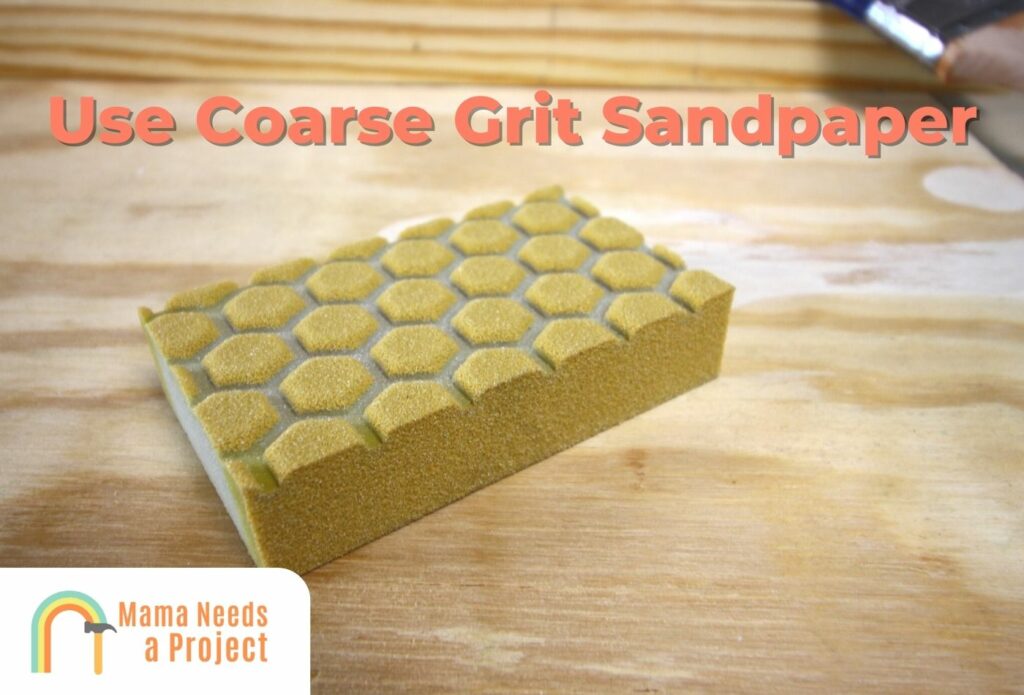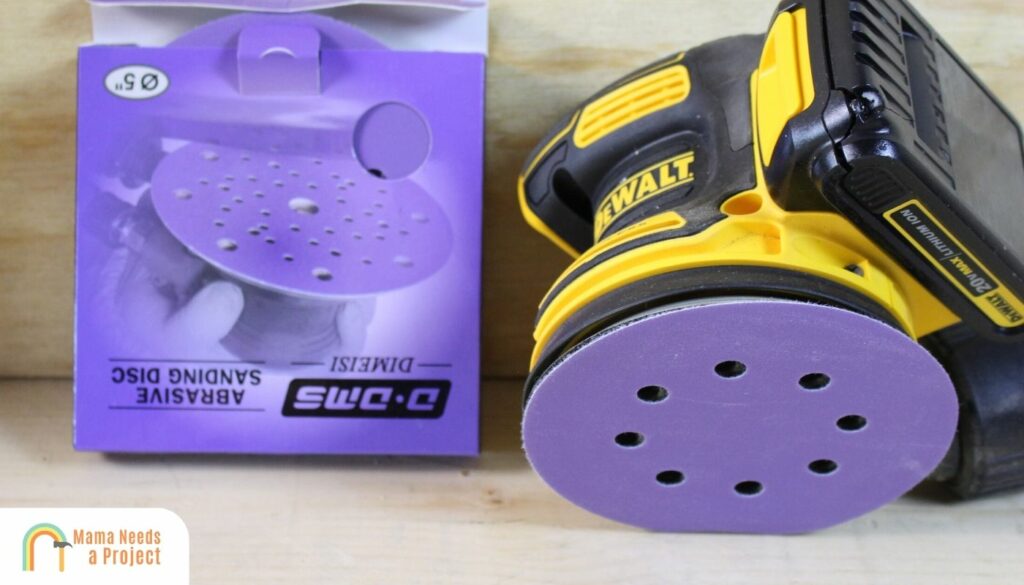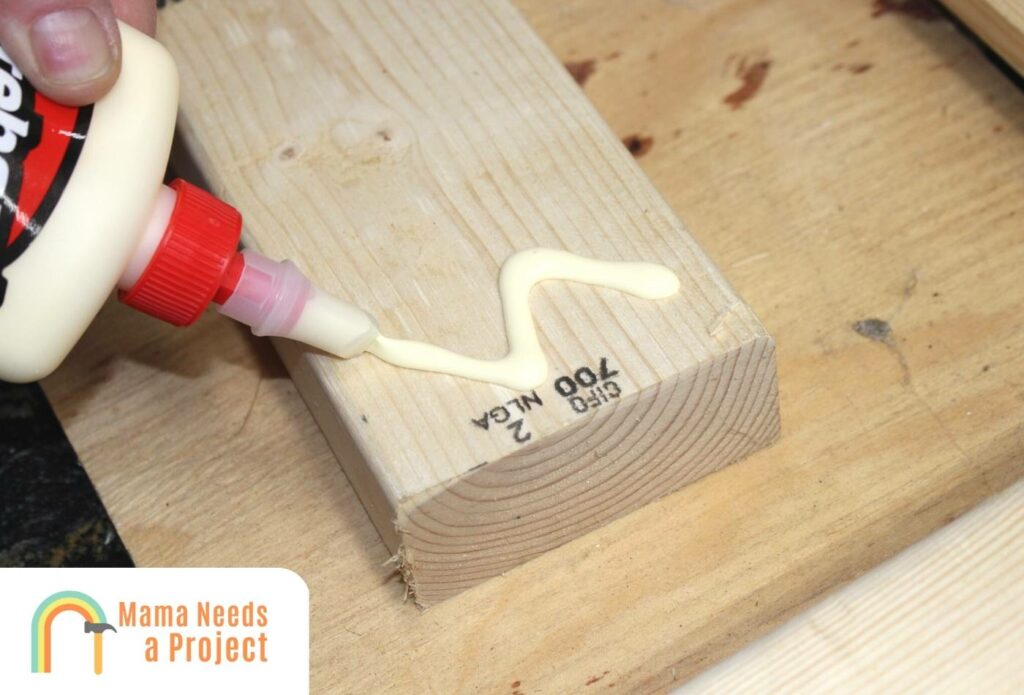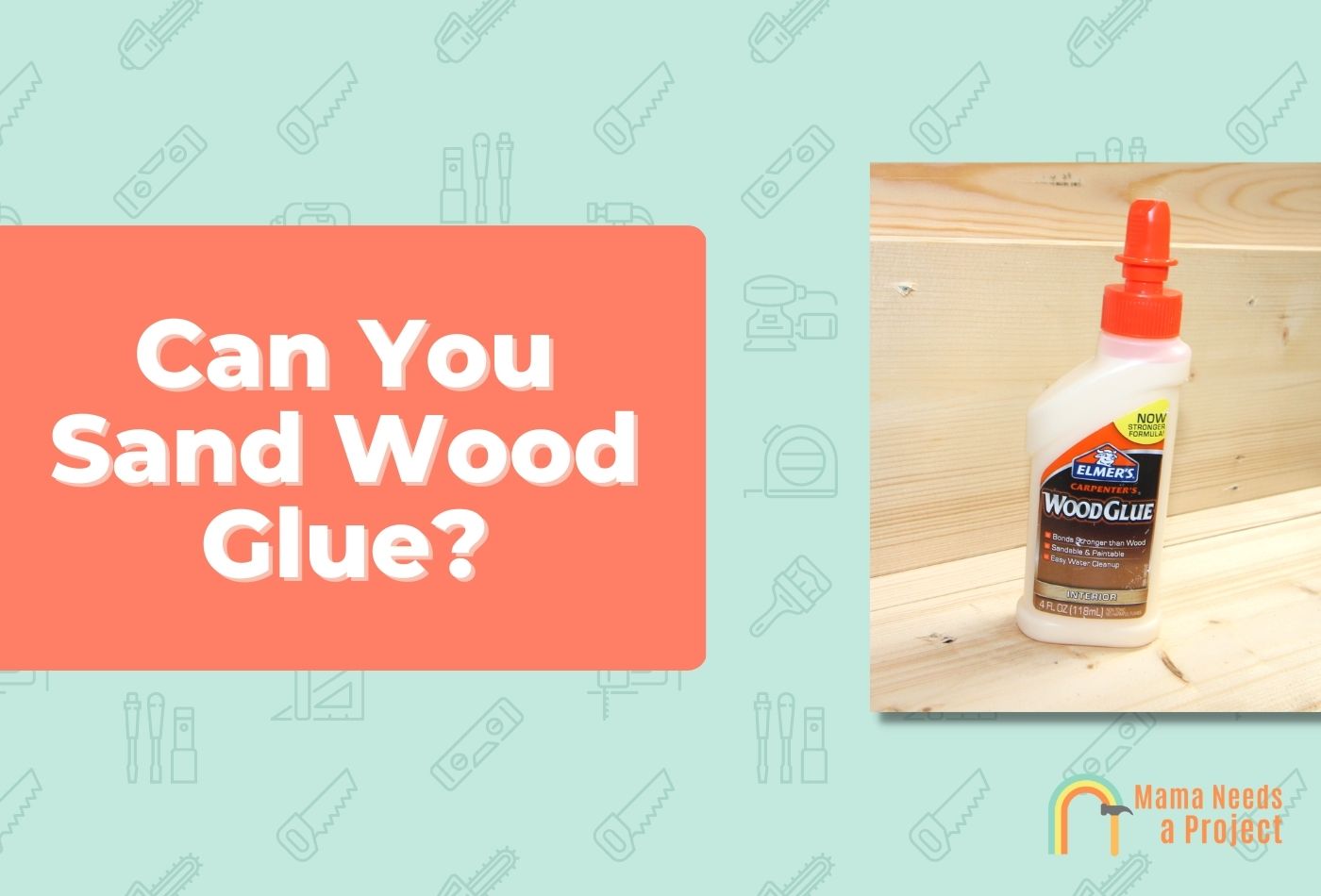Can You Sand Wood Glue? (2024 Guide)
Wondering if you can sand wood glue? If you’re working on a project and realize you might’ve over-poured your glue – don’t worry!
In this guide, I’ll explain everything you need to know about sanding wood glue!
Yes, you can sand most wood glues. You should sand with either 150- or 180-grit sandpaper by hand or with an orbital sander. After the excess glue has been sanded away, look for damp spots on the wood, as these indicate where glue has seeped into the pores and you can sand accordingly.
How to Sand Wood Glue
1. Grab Some Sandpaper
If you’re going to be sanding off wood glue, then it’s incredibly important to choose the right kind of sandpaper.

I like to start with 150-grit sandpaper before moving up to the grittier 180.
Some people don’t like to use grittier sandpapers with wood glue because this adhesive can clog gritty sandpaper quite fast, but I haven’t had this problem. Just take your time and don’t go overboard when you apply glue and you should be fine.
While it’s possible to start with a sandpaper that has less grit, like 60, doing so would require using more gritty sandpapers later. I view all that as unnecessary, so I just start with 150-grit and make my way up to 180 when it’s right to do so—just one transition!
2. Sand the Dried Wood Glue
Now that you’ve got your sandpapers selected, it’s time to get to the sanding.
Attach your first sandpaper, the 150-grit, to your orbital sander. Or you can just use a sanding block.

I prefer using the power sander because it’s quicker and much less effort. That said, you can get better results by hand, but this takes more time.
You pretty much sand until all the excess dried glue is gone. If you’re having a hard time identifying excess glue, look for stains on the wood; these often indicate the presence of glue.
3. Ensure You’ve Removed All the Glue
The third and final step is double checking to see if all the glue has been removed. To ensure you get all the glue out of the wood’s pores, go over the wood surface with mineral spirits or soapy water.
When you rub a small amount of either liquid on wood’s surface, if discoloration happens immediately this should be taken as a sign that there’s still glue present, in which case more sanding is required.
After you go over the surface with a cleaning agent, give it some time to dry before you apply stain or paint.
Wondering how strong wood glue is? It’s stronger than you think, and in some cases – stronger than wood itself!
How to Remove Wood Glue From a Finished Surface
The sanding method is great when you’re dealing with an unfinished surface, but when you’re dealing with a finished surface, you’ll need to use a different process to protect the finish.
That’s because to sand off the wood glue, you would need to sand off some of the finish as well, and usually this just results in a blotchy surface that’s difficult to fill in.
Moreover, one of the main reasons why sanding is best for unfinished wood is because it clears the pores that have been clogged with glue. But sanding doesn’t have this effect on finished wood, as the wood pores are clogged with finish and therefore the sandpaper wouldn’t be able to reach the glue.
It’s in this instance where what’s needed is something that can make glue softer and easier to remove—heat!
1. Grab a Heat Gun or Hairdryer
You can use either a heat gun or a hairdryer to melt wood glue. But remember that your goal is to melt it—not burn it, so be extremely careful.
If you use a hairdryer, it’s unlikely that you’ll burn the wood glue. On the other hand, if you use a heat gun, make sure it’s on the “low” setting, as this tool can burn wood glue if you’re not careful.
2. Scrape the Glue off With a Plastic Putty Knife
Once the glue is warm and in a more liquid state, this is when you can use a putty knife to remove it.
Using a plastic putty knife instead of a metal putty knife is recommended here, as if you make a mistake with a metal knife you could significantly gouge or scrape the wood.
Scrape the glue off at a 45° angle and make sure you scrape with the grain; it’s also wise to scrape away from the wood.
This is one of the best ways to remove wood glue from wood without harming the finish.
How Long to Let Wood Glue Dry Before Sanding

I usually let wood glue dry overnight before I sand it.
Yes, some wood glue manufacturers and plenty of woodworkers say you can sand wood glue after only six hours, but I still like to give the glue more drying time, as this way I ensure I’m not dealing with a mess when I get to sanding.
After all, if the wood glue isn’t mostly dry before you start sanding, you run the risk of clogging the sandpaper.
Plus, I remove any excess glue shortly after I apply it by using a damp rag and putty knife so there isn’t a ton left over.
I’ve also found that when it’s warmer out (>70°F), wood glue tends to dry and cure quicker, meaning you can sand earlier if you apply this in late spring, summer, or early fall.
Can Wood Glue Be Removed With Vinegar or Acetone?
Both vinegar and acetone can be used to make wood glue easier to remove. That said, neither makes a world of difference on their own.
It’s best to use either vinegar or acetone before warming the glue with a hairdryer or heat gun. Doing things this way speeds up the overall glue-removal process.
And again, you’ll have to rely on a plastic putty knife. If the glue is hard to remove, it needs to be warmed up more—don’t reach for the metallic, sharp chisel thinking this is the solution.
How to Make It Easier to Remove Wood Glue
Remove Excess Glue as You Go
It’s easier to remove excess glue if you don’t have to remove a ton of it. Therefore, when applying wood glue, make sure you get rid of any excess glue as soon as you notice it.
But keep in mind that it’s impossible to remove all excess glue after applying it, so sanding is pretty much inevitable—but how much sanding is necessary depends on how the glue was applied.
Don’t Apply a Ton of Glue
If you’re finding that you have to remove a lot of glue, it could be that you’re applying too much.
When wood is clamped together after glue has been applied, this squeezes out excess glue.
Applying wood glue isn’t really a science as much as it’s an art, and too much glue makes a mess whereas too little leads to a weak bond.
It’s best to spread the glue evenly before clamping two wood surfaces together; this way there’s no big blob getting pressed and spilling out when the boards are clamped.
Can you sand wood glue after it dries?
Yes, you can sand wood glue after it dries. It’s best to wait at least six hours before sanding to remove dried wood glue, as this way you ensure you don’t clog your sandpaper up with wet glue.
How do you smooth wood glue?
Wood glue can be smoothed by sanding. Applying mineral spirits to wood glue can also smooth it out. Warming this adhesive and then smoothing it with a putty knife is also possible.
Can Gorilla Wood Glue be sanded?
Gorilla glue, like virtually all other wood glues, can be sanded.
Final Thoughts
Wood glue is an excellent adhesive that I use all of the time. You can sand wood glue by using a 150 to 180 grit sandpaper and rubbing it until smooth.
Just be sure the wood glue is dry before sanding!

